Lightning is a discharge of electricity due to the difference in electrical charges. One strike can superheat the air to 30,000°C, causing the surrounding air to expand and “explode.” This expansion creates a shock wave that turns into a booming sound wave, known as thunder.
Lightning is no stranger to Trinidad and Tobago as it accompanies thunderstorm activity in the region. Although most lightning occurs in the Wet Season across T&T, people can be struck at any time of year. Lightning strike injuries and fatalities are rare in T&T, but strikes can damage property and cause power outages all too frequently.
Formation
Ice crystals within a turbulent cumulonimbus cloud flow up and down in the cloud’s updraft and downdraft. During this movement, small charged particles (electrons) transfer onto the falling, larger ice particles (graupel) as these crystals crash past each other.

The transfer of charges separates the positive and negative charges, where the top of the cloud becomes positive (in 90% of cases) and the base of the cloud becomes negatively charged.
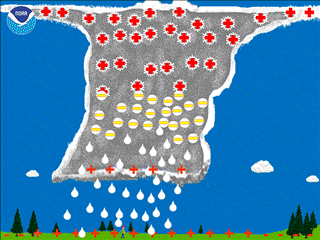
The ground is usually neutral, but anything above the ground tends to have a more positive charge at its top. Because opposites attract, the negative charge at the bottom of the storm cloud wants to link with the ground’s positive charge. Once the negative charge at the bottom of the cloud gets large enough, a negative charge flow, called a stepped leader, rushes toward the Earth. The positive charges at the ground are attracted to the stepped leader, so the positive charge flows upward from the ground. When the stepped leader and the positive charge meet, a strong electric current carries the positive charge up into the cloud. This electric current is known as the return stroke. We see it as the bright flash of a lightning bolt.
Lightning Types
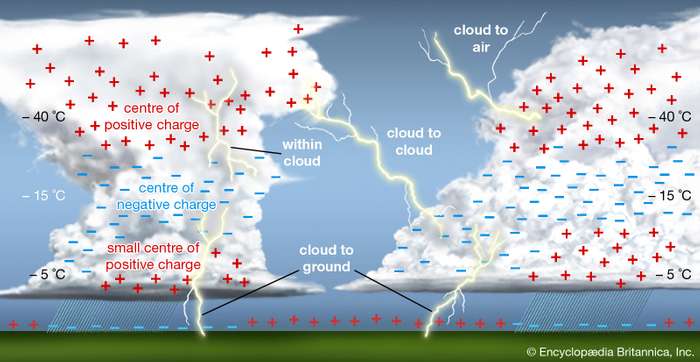
Three primary types of lightning are defined by the “starting” and “ending” points of the lightning bolt.
Cloud-to-ground
Strong afternoon thunderstorms are producing frequent and dangerous cloud to ground lightning across parts of Trinidad. Photos: Kyle Fonrose (Gasparillo) https://ttweathercenter.com/thunderstorms/
Posted by Trinidad and Tobago Weather Center on Tuesday, September 8, 2020
The lightning strike originates from the cumulonimbus cloud and ends on the Earth’s surface. It can also occur in the reverse direction, which is called ground-to-cloud. This is the least common type of lightning but the most dangerous to those on the ground.
Most cloud-to-ground strikes are considered negative lightning strikes, where the negative charge from the cloud is transferred to the ground, with the electrons traveling along the lightning bolt (or channel). Positive cloud-to-ground lightning, which is even less common, occurs when a positive charge is transferred to the ground, making up, on average, 5% of all lightning strikes. However, positive cloud-to-ground strikes are considerably more dangerous, with double the peak current of a negative cloud-to-ground strike, making them more capable of property damage and fire ignition. Also, these strikes are capable of propagating further away from a thunderstorm.
Cloud-to-cloud or Intra-cloud
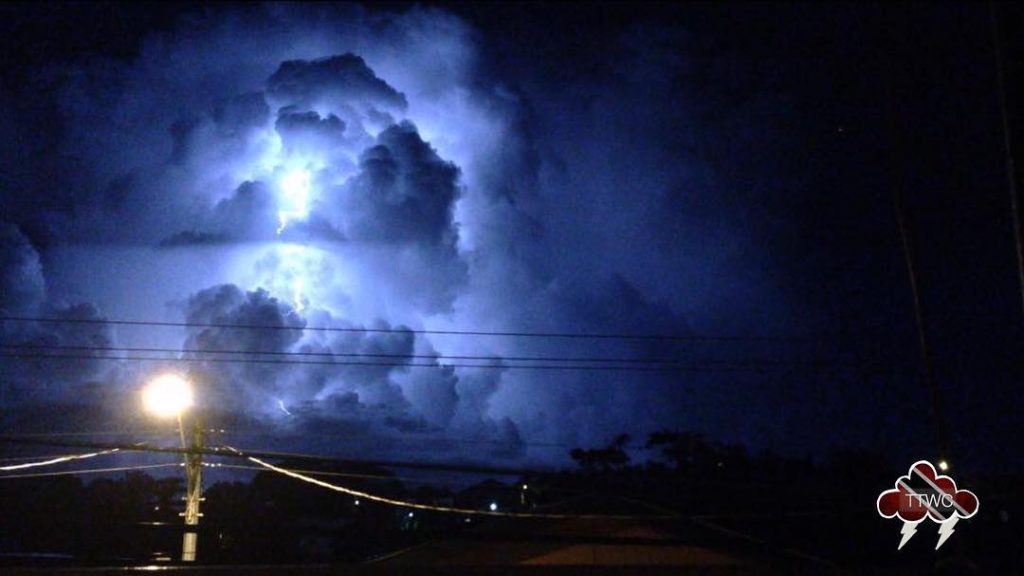
Most lightning that we see falls into these two categories. Cloud-to-cloud means lightning travels between two separate clouds, whereas intra-cloud means the lightning travels within the cloud. The lightning bolt never reaches the ground in both instances, but it still produces thunder. Intra-cloud lightning is the most frequent type.
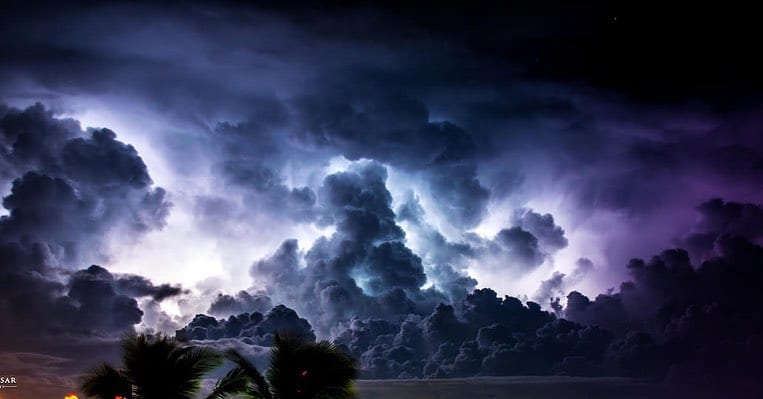
There are many, many other types of lightning. In T&T, we usually also see sheet lightning, which is cloud-to-cloud lightning that brightens the surface of a cloud, but the strike can’t be seen. This is typical for distant thunderstorms in our coastal waters and evening thunderstorms south of Trinidad moving across Venezuela.
Effects
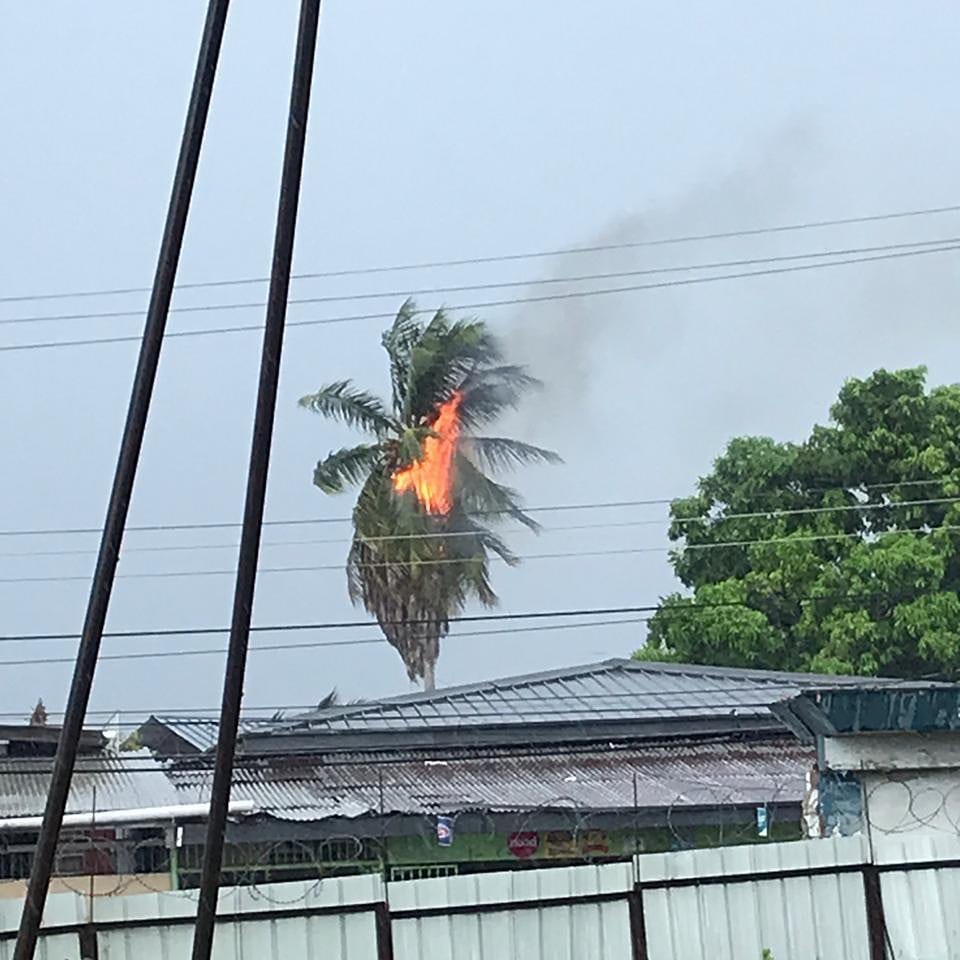
Objects struck by lightning experience extreme heat and currents. When lightning strikes a tree, the heat can vaporize its sap, causing a steam explosion that bursts a tree’s trunk. T&T also sees dry branches on fire, particularly in tall palm and coconut trees.
Buildings or tall structures that are hit may also suffer damage, with holes burnt through the roof or concrete exploding, similar to that of a tree’s trunk.

Though 90% of people who are struck by lightning survive, humans, and animals that are struck may suffer severe injuries to their internal organs and nervous system.)
As mentioned above, thunder is the byproduct of lightning, due to the superheating of air surrounding the bolt with temperatures as hot as 30,000°C, which is five times hotter than the Sun.
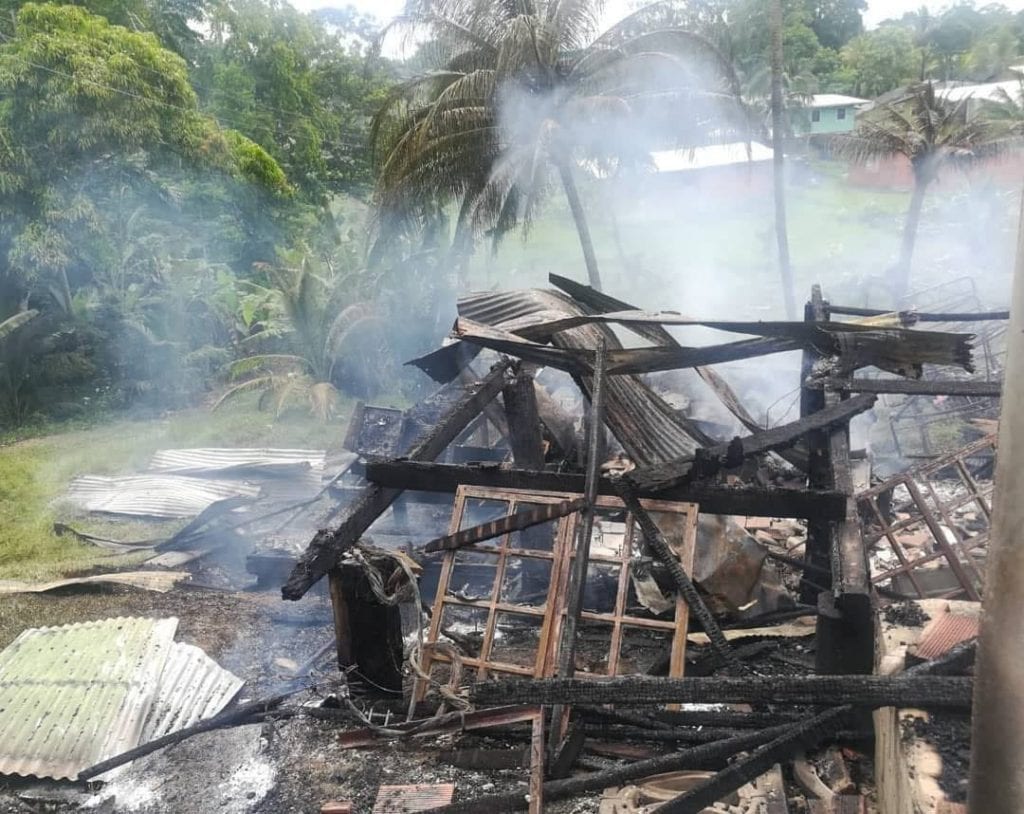
The heated air expands explosively, creating a shockwave as the surrounding air is rapidly compressed. The air then quickly contracts as it cools. This makes an initial crack sound, followed by rumbles as the column of air continues to vibrate.
Light travels at about 300,000,000 meters per second and sound travels through the air at about 343 meters per second. This is why we see lightning before we hear thunder, even if it is just above you.
Generally, for every three seconds between seeing a strike and when you hear thunder, it accounts for one kilometer. Lightning can be spotted up to 160 kilometers away, while thunder can only be heard from up to 32 kilometers away.
Lightning Forecasting
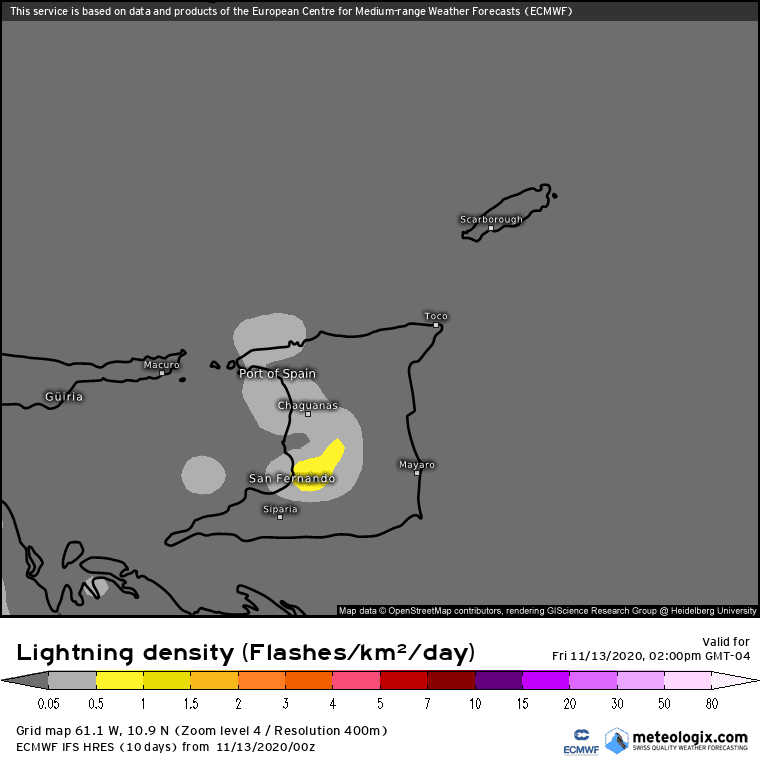
The presence of lightning is the differentiator between a normal convective shower and a thunderstorm. Hence, forecasting lightning and thunderstorms go hand in hand.
Forecasters rely on data and numerical weather prediction models, run by supercomputers globally, to determine whether conditions will be suitable for thunderstorm development.
Models are designed to calculate what the atmosphere may do at specific points over different spatial scales from the earth’s surface to the top of the atmosphere. Models use data gathered from weather balloons, satellites, aircraft, ships, temperature profilers, and surface weather stations.
The models start with these current weather observations and attempt to mathematically predict future weather using physics and dynamics to describe the atmosphere’s behavior. The predictions are usually output in text and graphics.
Lightning Detection
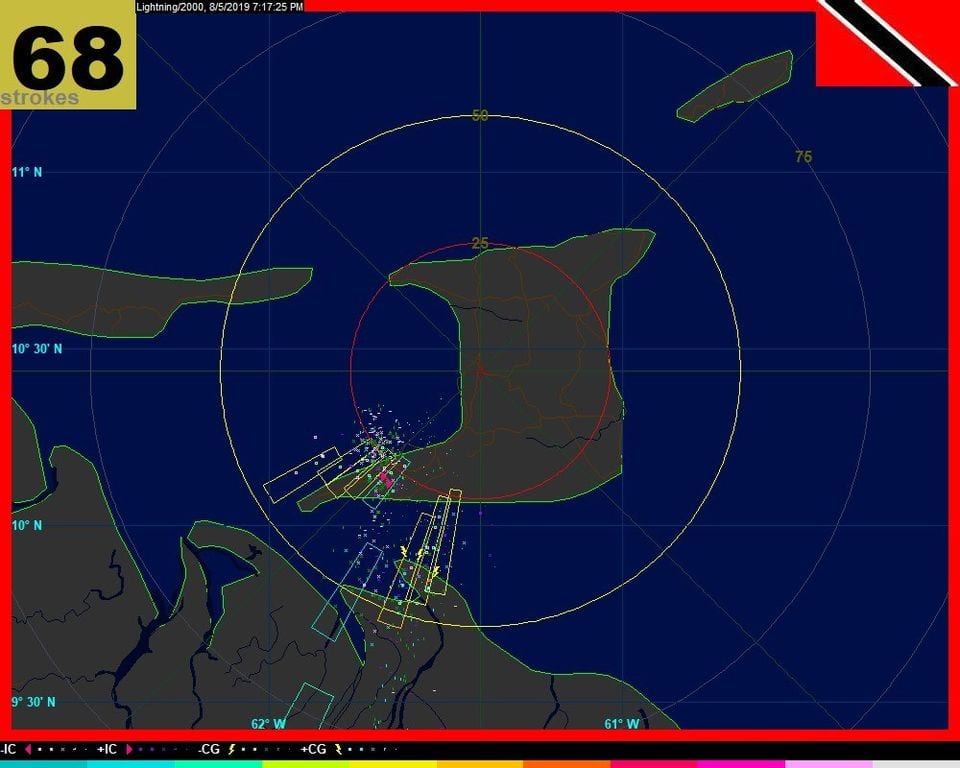
Lightning generates a wide range of electromagnetic radiation, including radio-frequency pulses. The times at which a pulse from a given lightning discharge arrives at several ground-based receivers can be used to locate the discharge source with precision on the order of meters. Several ground-based receivers are owned by the Trinidad and Tobago Meteorological Service and private citizens and businesses.
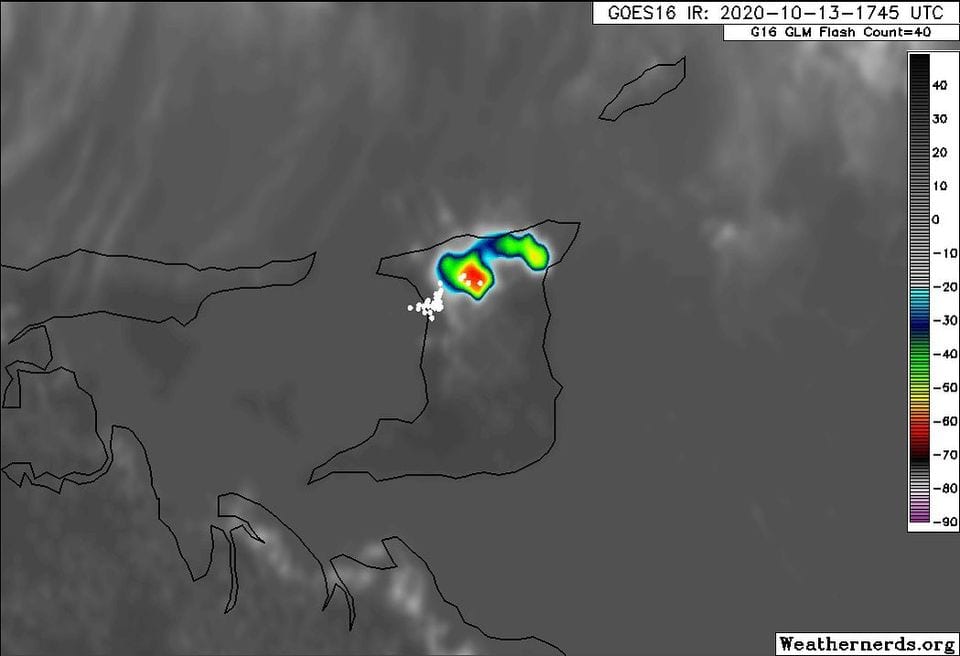
In addition to ground-based detectors, several instruments aboard satellites have been constructed to observe lightning distribution. Starting in 2016, the National Oceanic and Atmospheric Administration launched Geostationary Operational Environmental Satellite–R Series (GOES-R) weather satellites outfitted with Geostationary Lightning Mapper (GLM) instruments. These instruments are near-infrared optical transient detectors that can detect the momentary changes in a visual scene, indicating lightning. The lightning detection data can be converted into a real-time map of activity across the Western Hemisphere.
Occurrence & Frequency In T&T
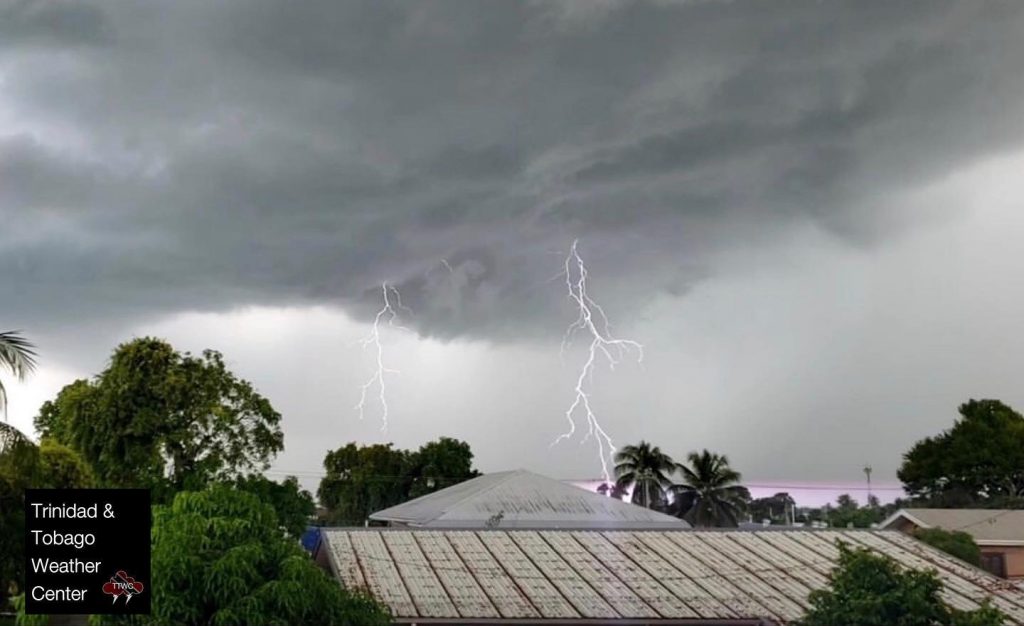
Lightning is not distributed equally across the globe. The frequency is approximately 44 (±5) times per second, or nearly 1.4 billion flashes per year on Earth. The average duration is 0.2 seconds, consisting of several much shorter flashes (strokes) of around 60 to 70 microseconds.
The average areal extent of a singular thunderstorm is 1810 km2. Trinidad’s landmass is approximately 4,786 km2, while Tobago’s landmass is around 300 km2. This means that a singular thunderstorm can entirely cover Tobago or just under 4/10’s of Trinidad. Hence, it isn’t easy to pinpoint a particular area where lightning occurs most frequently. However, during the Wet Season, we see heat-driven thunderstorms favor Trinidad’s western and northern halves, while tropical waves, the ITCZ, and low-level troughs trigger thunderstorms to favor the eastern half of Trinidad and Tobago.
Lightning, as would be the same with thunderstorm activity, is a year-round phenomenon, though there is a higher frequency of thunderstorms during the Wet Season.
Lightning FAQ’s
Is it safe to hide under a tree during lightning or thunderstorm?
Definitely not! During a thunderstorm, strong winds can bring trees down easily. Lightning can also cause the tree to explode, causing you harm.
How many volts and watts are in lightning?
A strike can have 100 million to 1 billion volts and contains billions of watts.
What color is lightning?
Strikes can appear in many different colors depending on what the light travels through to get to your eyes. Haze, dust, moisture, raindrops, and any other particles in the atmosphere will affect the color by absorbing or diffracting a portion of the white light of lightning.
Can lightning strike the same place twice?
Contrary to folk wisdom, lightning does hit the same spot (or almost the same spot) more than once. It could be simply a statistical fluke (i.e., with all the strikes that occur, eventually it will hit somewhere near a previous strike within a short period). It could also be that something about the site makes it somewhat more likely to be struck.
Lightning Safety
- NO PLACE outside is safe when thunderstorms are in the area!
- If you hear thunder, lightning is close enough to strike you.
- When you hear thunder, immediately move to safe shelter: a substantial building with electricity or plumbing or an enclosed, metal-topped vehicle with windows up.
- Stay in a safe shelter at least 30 minutes after you hear the last sound of thunder.
- Do not take shelter under trees!
Understanding The Threat
The threat that someone will be struck by lightning depends on their behavior when thunderstorms occur. The graphs below provide insight into why and when people are struck by lightning and what we can do to lower their risk.
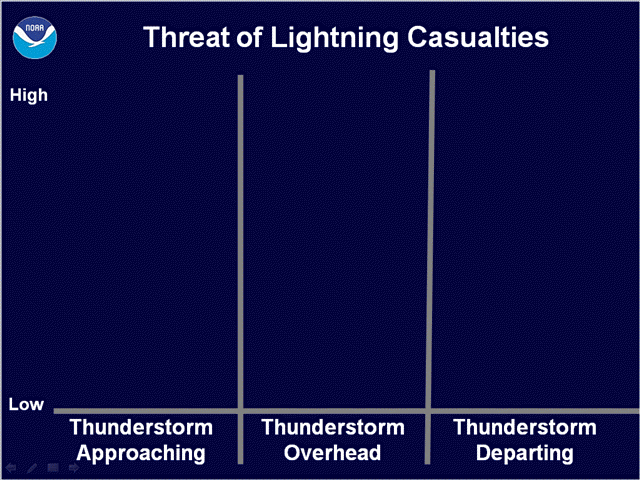
The threat of lightning increases as a thunderstorm approaches reaches a peak when the storm is overhead, and then gradually diminishes as the storm moves away. At the same time, people’s behavior determines the risk of a fatal lightning strike. While some people move inside at the first signs of a thunderstorm, many wait far too long to get to a safe place. Some wait until the thunderstorm is overhead and it starts to rain. Due to poor planning, others are caught outside and can’t get to a safe place.
Although most people get inside, some put themselves at risk by touching items that could become electrified by a nearby lightning strike. Finally, many people go outside too soon after the storm has seemingly passed, often only waiting for the rain to become lighter or end. All of these unsafe behaviors put people at risk when thunderstorms are in the area.
Minimizing The Threat
To minimize your risk of being struck by lightning, when going outside, plan to get to a safe place quickly if a thunderstorm threatens. If the sky looks threatening or you hear thunder, get inside a safe place immediately.
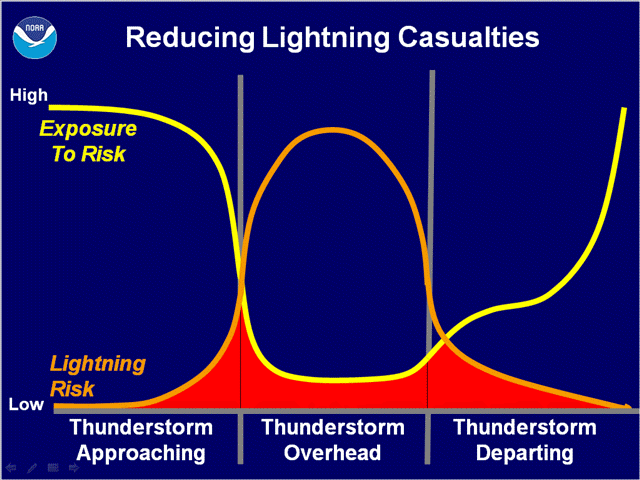
Once inside, avoid contact with corded phones, electrical equipment, plumbing, and windows and doors. Finally, wait 30 minutes after the last lightning or thunder before going back outside. If everyone followed those simple rules, the number of lightning casualties could be significantly reduced.
Protecting Yourself Outdoors
There is little you can do to substantially reduce your risk if you are outside in a thunderstorm. The only completely safe action is to get inside a secure building or vehicle if a thunderstorm is nearby.
If you’re at the beach or generally outdoors, your best course of action is to seek shelter within your vehicle or a nearby building. Do NOT seek shelter under the beach picnic shelters. Wait 30 minutes until after the last rumble of thunder before going back to the beach.
If you absolutely cannot get to safety, you can slightly lessen the threat of being struck with the following tips. However, you are NOT safe outside. If there is a high chance of thunderstorms, stay inside.
- Avoid open fields, the top of a hill, or a ridge top.
- Stay away from tall, isolated trees or other tall objects. If you are in a forest, stay near a lower stand of trees.
- If you are in a group, spread out to avoid the current traveling between group members.
- Stay away from water, wet items, such as ropes, and metal objects, such as fences and poles. Water and metal do not attract lightning but they are excellent conductors of electricity. The current from a lightning flash will easily travel for long distances.
If you’re on a bicycle, motorcycle, or dirt bike: If you see threatening skies in the distance and you are near a safe building, pull over and wait 30 minutes after the last rumble of thunder before resuming your ride.
Out at sea: Most lightning injuries and deaths on boats occur on small boats with NO cabin. It is crucial to listen to weather information when you are boating. If thunderstorms are forecast, do not go out. Drop anchor, and get as low as possible if you are out and cannot get back to land and safety. Large boats with cabins, especially those with lightning protection systems properly installed or metal marine vessels, are relatively safe. Remember to stay inside the cabin and away from any metal surfaces. Stay off the radio unless it is an emergency!
Protecting Yourself Indoors
Safe shelters are buildings with electricity and plumbing or metal-topped vehicles with windows closed. There are three main ways lightning enters structures: a direct strike, through wires or pipes that extend outside the structure, or through the ground. Once in a structure, lightning can travel through the electrical, phone, plumbing, and radio/television reception systems. Lightning can also travel through any metal wires or bars in concrete walls or flooring.
- Stay off corded phones. You can use cellular or cordless phones.
- Don’t touch electrical equipment such as computers, TVs, or cords. You can use remote controls safely.
- Avoid plumbing. Do not wash your hands, take a shower, or wash dishes during a thunderstorm.
- Stay away from exterior windows and doors that might contain metal components leading from outside your home to the inside.
- Stay off balconies, porches, and out of open garages.
- Do not lie on concrete floors or lean against concrete walls.
- Protect your pets: Dog houses are not safe shelters. Dogs chained to trees or on metal runners are particularly vulnerable to lightning strikes.
- Protect your property: Lightning generates electric surges that can damage electronic equipment some distance from the actual strike. Typical surge protectors will not protect equipment from a lightning strike. Do not unplug equipment during a thunderstorm as there is a risk you could be struck.
More information can be found at the United States National Weather Service.





